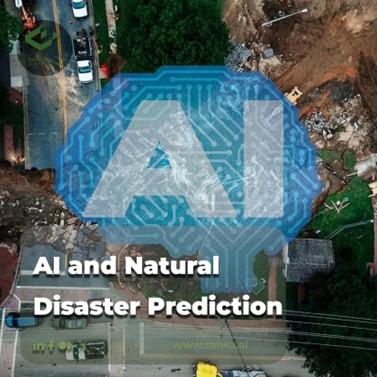This blog post provides an overview of core AI and Natural Disaster Prediction techniques applied to various natural disaster prediction efforts and examples of current models and systems. We discuss AI's significant advantages, current limitations, and barriers to operational deployment. AI has vast potential to revolutionize environmental prediction and boost resilience – but only if intelligently integrated with domain expertise and local realities.

Natural disasters such as hurricanes, wildfires, floods, and earthquakes cause massive destruction worldwide each year. Reliable early warning systems are crucial to mitigate risks and damage by informing evacuation planning and emergency response. However, inherent uncertainties and complex variables make predicting these chaotic events exceptionally challenging.
Recent advances in artificial intelligence as a service (AIaaS) and machine learning offer new opportunities to strengthen forecasting and risk quantification of natural disasters. From honing hurricane path projections to flagging wildfires from satellite data, AI-enhanced models promise to save lives and resources through enhanced preparedness.
How Does It Work?
AI leverages advanced machine learning algorithms to detect subtle patterns in massive multivariate datasets relevant to disaster formation. By "training" on large labeled datasets, systems can learn to model extremely complex phenomena. Statistical methods then allow assigning probabilistic forecasts to convey uncertainty.
Common methods include neural networks to identify nonlinear relationships, computer vision for analyzing earth observation imagery, natural language processing to extract insights from disaster reports, and reinforcement learning to optimize predictive models.
For example, a convolutional neural network could be trained on satellite images of conditions preceding historical wildfires alongside meteorological data. This allows the model to learn combinations of vegetation moisture, terrain, temperature, winds, etc., that tend to lead to ignition so it can recognize similar patterns in new data. AI takes advantage of exponential growth in environmental monitoring data volume and variety.
Integrating Traditional Knowledge and Local Observations
While AI and natural disaster prediction using machine learning techniques offer powerful tools for natural disaster prediction, it is essential to recognize the value of traditional knowledge and local observations. Indigenous communities and local populations have accumulated invaluable experience and knowledge about their environments, often spanning generations. Integrating this knowledge with AI-based models can enhance their accuracy, relevance, and acceptance within affected communities.
Traditional ecological knowledge (TEK) encompasses the cumulative body of knowledge, practices, and beliefs developed by indigenous and local communities through their long-term interactions with the natural environment. This knowledge can provide insights into environmental patterns, early warning signs, and effective coping strategies that may not be captured in conventional scientific data or models.
AI Methods for Disaster Forecasting
AI is well suited for natural disaster modeling because of its ability to analyze vast amounts of multi-dimensional data and detect subtle patterns. Several machine learning techniques are powering new forecasting systems:
Neural networks identify nonlinear relationships in historical disaster data that improve model accuracy. Computer vision analyzes high-resolution aerial or satellite imagery using object recognition and change detection algorithms. This enables real-time disaster monitoring, like flagging wildfire ignition before visible smoke.
Natural language processing extracts useful insights from disaster-related documents and reports to augment other data. Analyzing post-wildfire assessment reports could uncover patterns linking fire damage to terrain, vegetation, and climate variables. Simulation ensembles combining AI-enhanced fluid dynamics, atmospheric models, and hydrological simulations with uncertainty quantification provide highly localized forecasts. AI can help optimize model inputs and parameters.
Sources:
Saiwa From Vision To Innovation
https://saiwa.ai/blog/ai-and-natural-disaster-prediction/ .
Provided by the IKCEST Disaster Risk Reduction Knowledge Service System
Comment list ( 0 )
